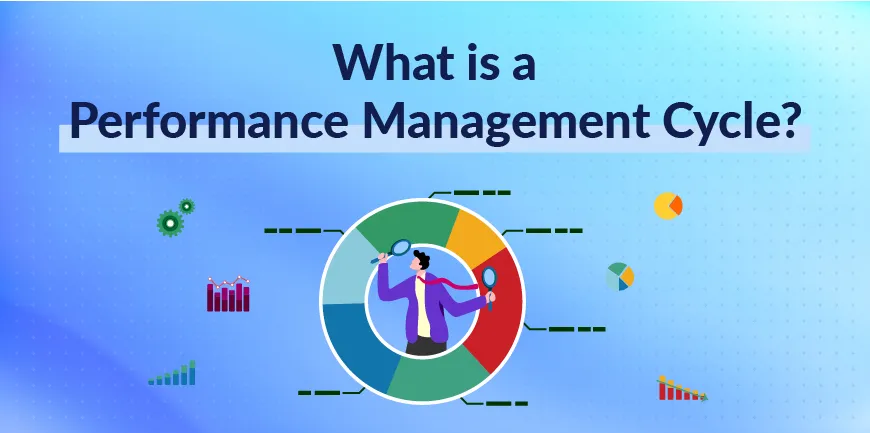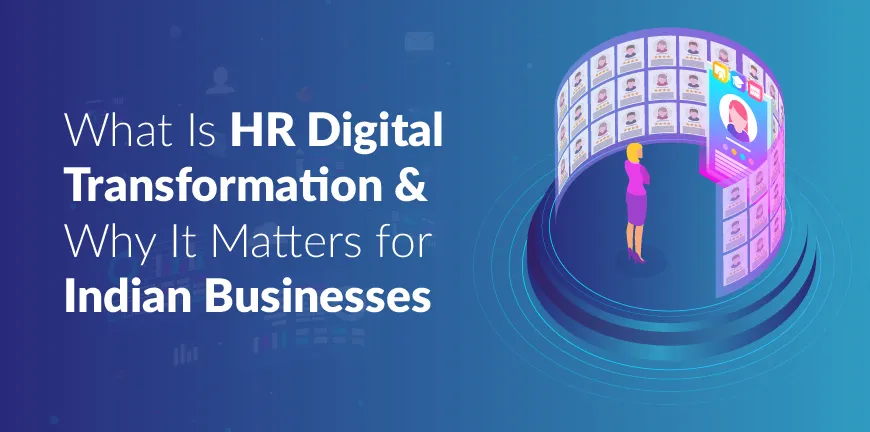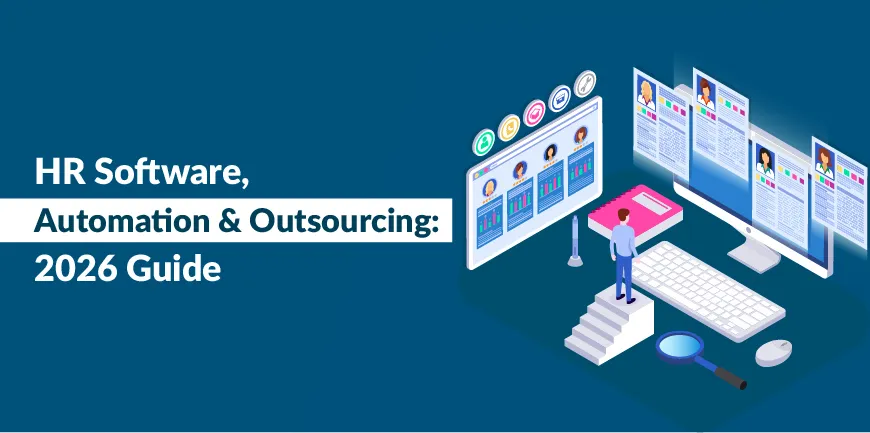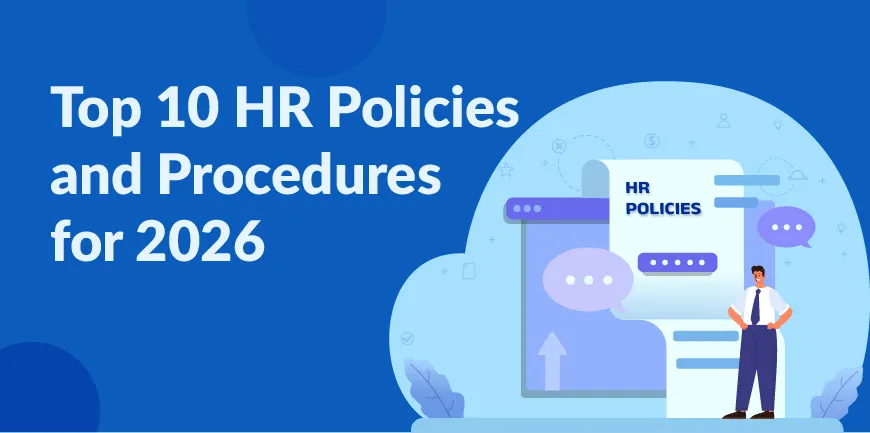
What Is Employee Experience? Definition & Strategies
06/10/2025
What is the Difference between Resume vs CV? 4 Tips to Write them Effectively
07/10/2025- What is a Performance Management Cycle?
- Key Stages of the Performance Management Cycle
- Importance of Workforce Performance Cycle
- Best Practices for Implementing the Cycle
- Core Challenges and Proven Solutions
- Influence of Technology on Employee Performance Systems
- Real World Instances of Performance Development Cycle
- Future Trends in the Performance Optimization Process
- Frequently Asked Questions
What gets measured gets managed.” Says Peter Drucker, a highly acclaimed management writer and influential thinker.
The performance management cycle is the heartbeat of setting objectives, enabling performance progress, and acknowledging success. It is now in the past that performance management was evaluated once a year to tick boxes. It is a continuous process today, enabling individuals to grow and thrive within an organization that caters to company goals and makes extensive contributions to team building.
According to a survey, 83% of employees desire feedback at least once a month, while 30% want it every week.
What is a Performance Management Cycle?
A performance management cycle is a well-structured, ongoing method of supporting and guiding employees to accelerate their productivity and enhance their work quality. The cycle amalgamates ongoing support systems, feedback processes, and assessments to foster employee progress, catering to the objectives of businesses.
Key Stages of the Performance Management Cycle
Leaders, managers, employers, and recruiters need to design an effective employee performance management cycle and follow certain key components. Let us check out some of the vital stages:
Planning
This is the primary stage where managers and employees establish clear, quantifiable objectives related to the evaluation of performance. The heads explain the wider organization’s goals and encourage employees to comprehend them.
1. Monitoring
This phase is ongoing as managers and heads consistently oversee and track the performance of staff against the goals established. This stage entails continuous feedback, training, mentoring, and conducting assessments to ensure that employees are catering to the goals and that problems are addressed instantly.
2. Developing
Organizations utilize the information extracted from the monitoring stage to focus on upgrading employee skills and prospects. This can entail conducting training programs, mentoring, and providing them with new tasks, etc.
3. Talent Appraisal and Recognition
The final phase is all about a formal assessment of the overall performance, where a rating is given. This enables the identification of great work and deals with issues of poor performance. The best part is when hard work is recognized, appreciated, and rewarded, fostering motivation and better progress.
Importance of Workforce Performance Cycle
Following a well-planned performance cycle framework can accentuate the company’s growth exponentially. Let us find out why it is significant:
1. Develops future-ready teams
As an enterprise, if you are implementing best-in-class talent performance methods, continuous oversight, and providing developmental programs, then be assured that you will be able to unlock the hidden potential skills and identify performance issues. You can then work on the issues, strengthen your team, and progress smoothly.
2. Enhanced employee engagement
Effectively implementing a performance management cycle model and establishing employee expectations provides career development opportunities for your staff, and comprehending their roles results in a positive impact on meeting company objectives. A constant and transparent management system makes employees feel appreciated and acknowledged. This makes them feel encouraged to contribute more and work harder.
3. Trust-powered performance landscape
A culture created by leaders and Hr managers that includes trust, transparency, and clear communication will seep into the fabric of companies. This involves the approach of the management process and the policies that are implemented. When heads and managers initiate an open channel of communication, providing valuable feedback and regular interactions, it nurtures a happy and healthy work environment.
4. Accelerated operational efficiency
The outcome of a well-designed management system is ultimately an improved organizational performance. Enabling and empowering employees with learning and growth models, and developing them to contribute better, positively impacts an organization and the broader business.
Best Practices for Implementing the Cycle
1. Establish clear goals from the get-go
Achievable, quantifiable, and relevant goals are to be set from the beginning using modern and smart frameworks catering to company goals with the involvement of employees. Involving employees.
2. Focus on constant feedback
Feedback is an integral part of the performance development cycle, and it must be an ongoing process that involves training, guiding managers to provide unbiased and timely feedback.
3. Advocate a culture of trust and respect
Creating a space where employees feel safe mentally and workwise is essential. Assessment criteria should be transparent, devoid of any bias, and smooth communication is key to making employees feel satisfied and comfortable discussing their issues and aspirations.
4. Harness data to make decisions
Capitalizing on predictive analysis and useful data to assess progress, identify new trends, and spot developmental errors.
5. Connect learning to development
Utilize the review results to guide employees with career paths and how to progress. Employers and managers can identify top-performing employees in the process for future leadership positions.
6. Optimise functions through automation
With AI and modern tech ready to assist, companies should utilize the advanced AI-enabled tracking systems for talent performance systems and enhance efficiency.
Core Challenges and Proven Solutions
The performance management cycle in HRM is an effective and intrinsic part, where intelligent strategies are implemented to enhance the performance of staff and the organization. However, it comes with its own challenges. Let us check out some of the hurdles:
1. Inadequate goal and alignment clarity
This problem arises when companies fail to set proper objectives, and the alignment between staff and the company’s vision is inconsistent. The result is alleviated performance and a lack of direction. Businesses need to ensure to establish impeccable goals from the beginning, keeping employees in the loop.
2. Insufficient interaction and feedback
The dearth of proper feedback might leave individuals in the dark, leaving them directionless. They are clueless about their contributions to the business. Similarly, erratic communication and not discussing expectations and objectives can hamper the organizational performance framework and limit employee progress. There must be a constant open channel of communication and regular feedback systems to evaluate and improve performance.
3. Low-level Staff Engagement
Employees lose interest in work if they feel demotivated and discouraged. Several reasons can disengage individuals, like an unhealthy work landscape, not providing due recognition, a lack of work-life balance, etc. Organizations need to then step up their rewards and acknowledgment systems and provide flexible work modes to inspire the manpower, creating a supportive atmosphere.
4. Scanty Training Programmes for Managers
An impactful employee performance system is unachievable if there are sketchy training structures across departments. Managers might be incapable of guiding individuals due to a dearth of proper training. Organizations can change the game plan by designing leadership training programs and mentoring modules to hone the training skills of managers.
5. Barriers to Change Adoption
Problems might crop up in organizations when new processes or technologies are introduced. There are chances of individuals within the organization being hesitant to adopt them. Here, organizations can explicitly communicate and explain to teams and leaders why the change is necessary and talk about the positive outcomes it will deliver.
Influence of Technology on Employee Performance Systems
The usage of technology in Hr and businesses and leveraging it is a new norm for greater productivity and improved efficiency. Here are a few distinct benefits encompassing a tech-powered talent management system:
1. Access to Updated Info
New technologies enable the extraction of well-informed and useful data that can facilitate smooth employee experience systems. This enables managers and heads to comprehend issues accurately and timely manner to react and respond fast.
2. Easy Recognition of Success Graphs and Irregularities
Technology and AI-driven tools help HR managers and employers to track performance promptly and identify areas that need special attention. The accurate employee success requirement information can be drawn easily.
3. Automation of Routine Tasks
Tech facilitates a faster process as it automates the evaluation procedures. It reduces manual work, report compilation, etc. This is beneficial for managers and leaders as they can focus on thoughtful interactions and meaningful plan development.
4. Remote Talent Work Management
In the era of flexible work arrangements, AI-enabled cutting-edge technologies offer digital tools that ensure a smooth and constant tracing of individuals working remotely, regardless of their geographical limitations.
Real World Instances of Performance Development Cycle
E-commerce giant Amazon follows a data-enabled culture. Performance targets are set quarterly and are measured according to benchmarks. In terms of development, they have designed a structure where individuals who perform excellently are provided with leadership growth scopes, while underperformers undergo well-designed improvement plans.
Global IT leader, Microsoft, facilitates growth-centric performance evaluations. Their annual reviews are planned, catering to employee performance and syncing with the culture of Microsoft’s progressive mindset. Emphasis on feedback that focuses on developmental structures, career scopes, and future opportunities.
Future Trends in the Performance Optimization Process
- Constant performance assessments- Gone are the days when reviews were seldom conducted. Today, there must be a continuous flow of feedback and interactions between employers and employees.
- AI-Driven Performance Understanding and Predictive Analysis- AI is not just an instrument but is now emerging as an ally in employee management processes. From recommending learning and development plans to identifying anomalies, AI is transforming patterns and automating systems.
- Holistic feedback Mechanism- In today’s era, the manpower is distributed globally, and it requires systems that cater to individuals across borders.360-degree feedback is the new norm.
- Integrating Wellness into the employee effectiveness model- People have become the focal point, and their well-being matters the most, so the wellness KPIs are being considered and integrated into performance review mechanisms.
- Fair and Data-based Performance Frameworks- Working with inconsistent or ambiguous data is not on the cards anymore today. An efficient process is to utilize analytics to keep a tab on trends and performances. Crafting reviews to eliminate unintentional bias is the new normal.
Key Takeaways
- Performance Management is an Ongoing Process
- Four Core Stages are Key to the Cycle
- Employee Welfare and Engagement is Significant
- Technology Revolutionizing Performance Management
- Vital Challenges must be Overcome to Attain Efficiency
Frequently Asked Questions
1. What is the performance management cycle in HR?
The performance management system in HR is a continuous procedure of evaluating, developing, and improving employee performance.
2. What are the 4 stages of the employee management cycle?
The four stages entail Planning, Monitoring, Developing, and Recognition and Rewarding.
3. What is the difference between a performance appraisal and a performance management cycle?
A performance appraisal is conducted annually, while the Talent Performance System is a continuous process.
4. What role does HR play in the performance management cycle?
HR plays a vital role by crafting the overall framework, ensuring consistent and fair processes, and providing training models for managers.
5. What is the future of the performance management cycle?
The future of the workforce performance lifecycle entails a flexible and personalized approach that has to be ongoing. It must be backed by new technology, with data-enabled inputs.
6. What tools are used for performance development cycles?
Tools used for the performance development cycle are goal setting and tracking systems, a 360-degree feedback tool, pulse surveys, etc.
Contact Us For Business Enquiry

Rajkumar Shanmugam
Rajkumar Shanmugam is the Head of HR at ALP Consulting, bringing over 19 years of comprehensive HR leadership experience across India and international markets. His expertise spans talent acquisition, employee relations, performance management, compliance, and HR transformation. Rajkumar has a proven track record of driving people-centric initiatives, enhancing workplace culture, and aligning HR strategy with business goals. With extensive experience in US staffing operations and global mobility, he continues to lead organizational excellence through innovation and employee engagement.




